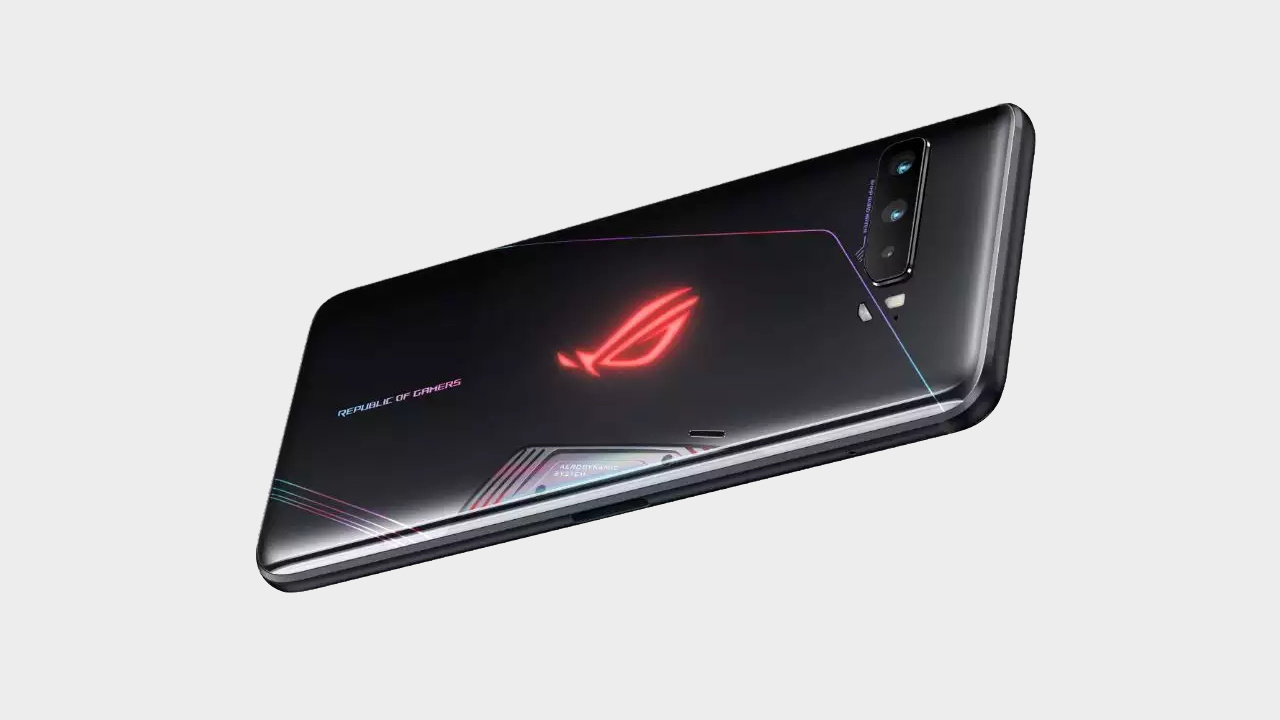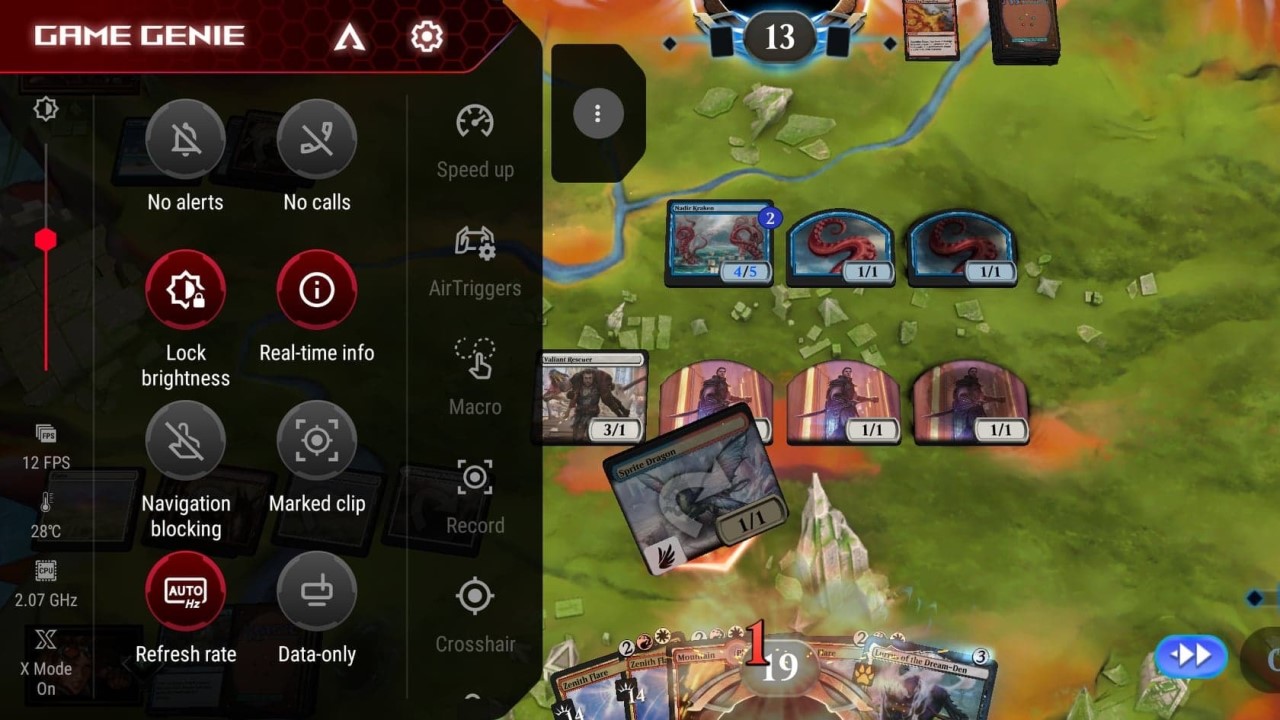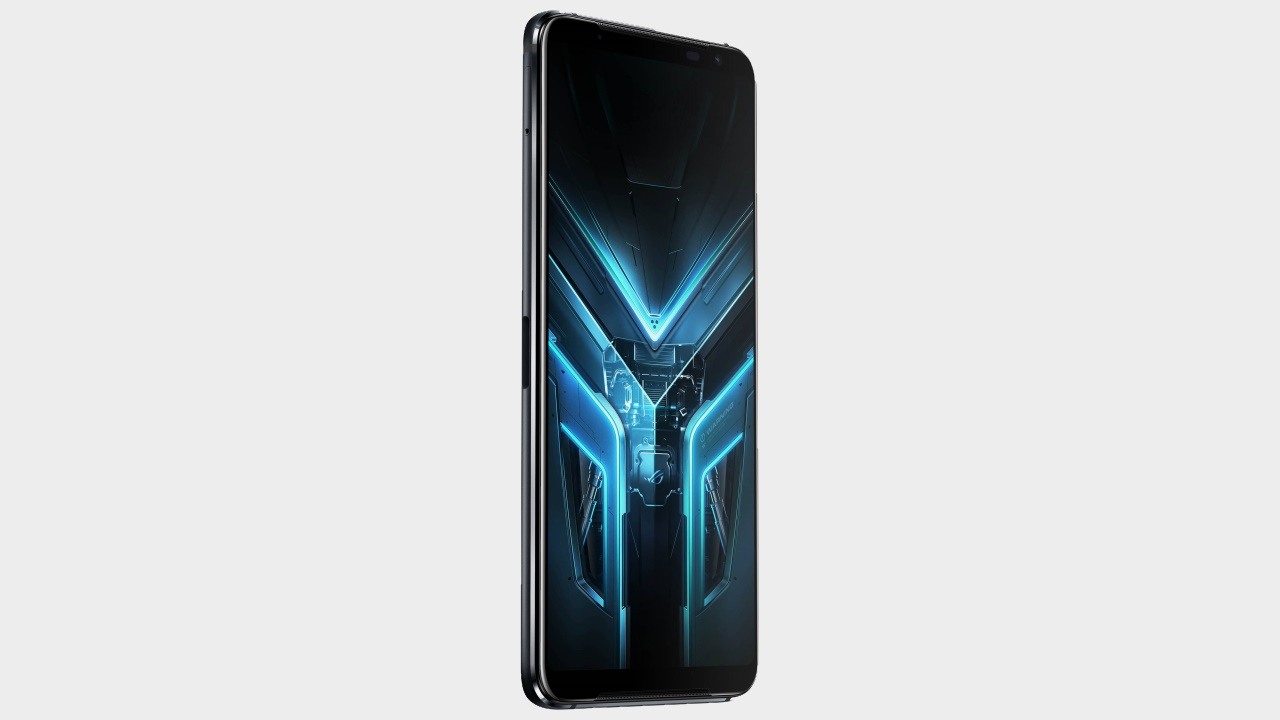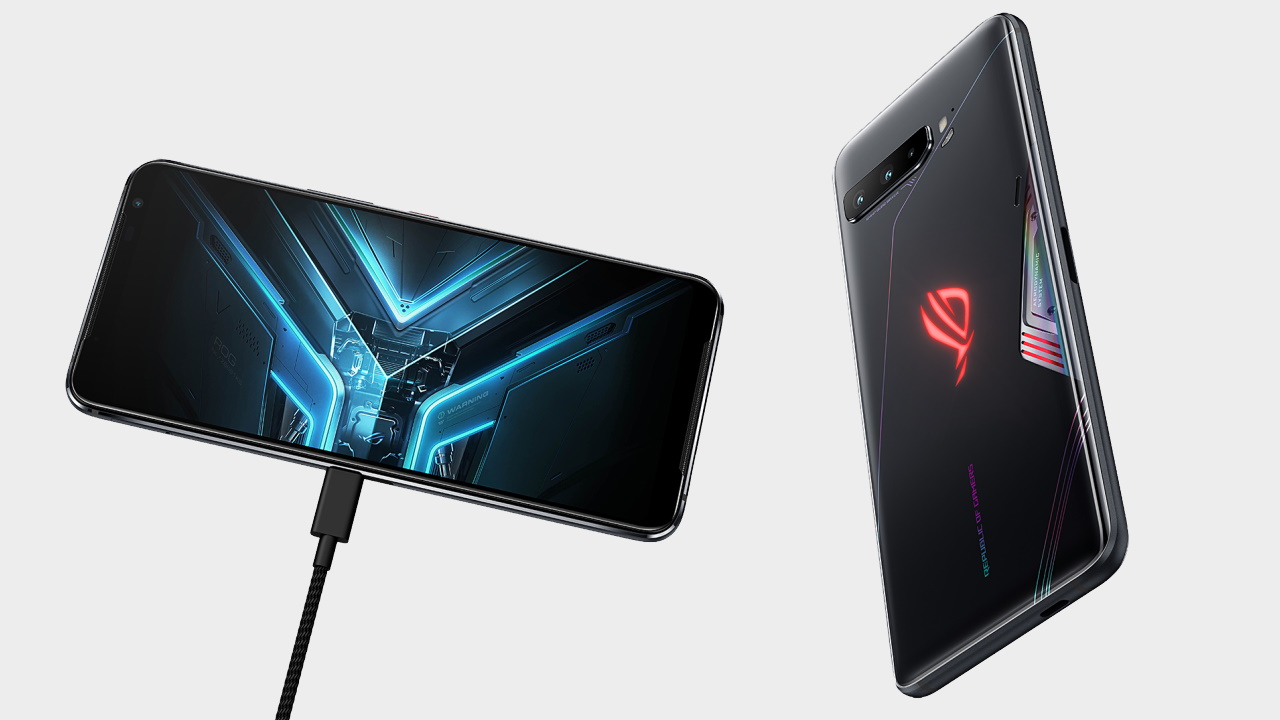GamesRadar+ Verdict
The ASUS ROG Phone 3 is a feat of engineering majesty, and one that looks and feels just as good as it runs. With eye-watering performance, a gorgeous AMOLED screen, and industry-leading gaming controls and software, it's difficult to beat.
Pros
- +
Incredibly powerful
- +
Stunning display
- +
Excellent gaming features
Cons
- -
Camera doesn't hold up
- -
No wireless charging
Why you can trust GamesRadar+
The ASUS ROG Phone 3 builds on the success of the previous model by doubling down on power, soaring to extreme heights in refresh rates, and sanding down some of those more aggressive edges - this really is a contender for best gaming phone, and we've barely started. With a Snapdragon 845 Plus CPU running at 3.1GHz at the helm, the performance inside this Android device is unparalleled when it comes to sheer gaming horsepower - and it also looks and feels just as good as it runs.
With between 12GB and 16GB RAM onboard, a massive 6,000mAh battery, 6.59-inches of AMOLED display, and dual front-firing speakers, it's easy to see why this smartphone reaches into the $1,000 and almost best gaming tablet territory! (Or maybe 'phablet'.) That's a little higher than the ROG Phone 2 launched at, but with upgrades both under the hood and up top there's every reason to splash out on the newest model.
Design
While the previous ASUS ROG Phone leaned a little too hard into its gamer aesthetic, the ROG 3 merely tickles that RGB fancy and penchant for angular design. There's still a vibrant glowing ROG logo adorning the smooth glass back, but surrounding it there are only a few of those sharp line designs that made the original stand out from the crowd. Overall, the ASUS ROG Phone 3 speaks the same design language as mainstream smartphones now - albeit one with an accent.
There's no doubt about it, you'll feel the weight of all that power in the hand. However, the ROG Phone 3 is still well balanced with all that heft evenly distributed to make for comfortable maneuvering through scrolling and menu navigation while vertical and gaming while horizontal.

You'll find the standard lock and volume keys along the aluminium panels around the sides, as well as returning Air Triggers that can be mapped to in-game controls for a more console-like experience. You're also getting two USB-C ports: a conventional charging port along the bottom of the handset, and another locked away behind a rubber cap.
That second USB-C port came in particularly handy for charging while playing, but also acts as a connection for a wide variety of accessories (including the cooling system that ships with these devices). However, removing the rubber port cover is just as fiddly as it is difficult to keep track of once it's out.
Features
A gorgeous 6.59-inch AMOLED display adorns the front of the ASUS ROG Phone 3 and offers up a super crisp picture with buttery smooth response to boot. While the 2340 x 1080 resolution can't quite keep up with Samsung's top-of-the-line releases, there's a level of quality packed into this screen that almost moves beyond pixel density.
The aforementioned 144Hz refresh rate goes a long way in making this experience so impressive. While only supported on select titles there are enough games making good use of this feature to make the upgrade well worth your time, and the results make mainstream smartphones feel like Nokia bricks by comparison. Plus, where a game might not support 144Hz refresh rates, the ASUS ROG Phone 3 will automatically apply the optimum setting straight off the bat.
ASUS's own Armoury Crate software comes preloaded here, allowing you to organise your collection of games and set up profiles for each title. However, we spent more time tinkering in the, also native, Game Genie.
Swipe in from the side and you'll be able to access a considerable control panel of settings and performance tweaks, all configurable on the fly while in play. You can set a brightness lock, toggle real-time stats, switch up your refresh rates, create and edit macros, and even stream directly to YouTube from this incredibly handy piece of kit. And that's all before we even get started on the new Air Triggers.

Two panels along the aluminium side may look inconspicuous enough, but these touch-sensitive sensors add a whole new dimension to your mobile gaming experience. They were previously available on the ROG Phone 2, but with additional enhancements and scope for more gestures here, they offer far more than simple replacements for shoulder buttons these days.
More actions have been built into these triggers, with the ability to map game controls to swipes, slides, and a continuous press. A dual partition can also be configured to offer both R1 and R2 / L1 and L2 functionality for a true console-gamepad-like experience as well. ASUS has also added a new motion sensor control, but in our testing, it felt a little too unnatural to incorporate comfortably into twitch reflexes or everyday use.

Performance
With all that processing power, graphical fidelity, and additional game-enhancing controls, it's easy to see how the ASUS ROG Phone 3 performs as well as it does. With so much under the hood, anything less than stunning performance would be a surprise here, but the speed and smoothness of the overall experience are still breathtaking.
One of the fastest phones out there, we experienced no stuttering, lag, or app dropouts in all our time with this turbo-charged handset. Even the most chaotic of COD Mobile missions or the most complex MTG Arena boards couldn't phase this device, and excellent cooling goes a long way in maintaining that efficiency.
We did notice a little extra temperature after a few solid hours of gameplay, but never a rise to concerning levels, and slipping on the included cooling fan instantly brought things back down to their usual temperatures. Plus in all that time there was never a hint that the CPU's performance had even noticed.
The removal of a 3.5mm jack will frustrate some, but that additional USB-C port means you'll be able to take advantage of the ASUS ROG Delta S headset while charging as well. The USB-C headset feels tailor-made for the Phone 3, especially since ASUS has recently updated its phone to take advantage of audio partner Dirac's patented headset balancing tech. Compatible with select ROG headsets (including the Delta S), the enhancements allow for a more natural sound profile that also strengthens the bass range and lends its hand to dialogue clarity as well.

However, taking the headphones off for a moment reveals a substantial audio system built into the phone itself as well. Dual front-firing speakers located at the top and bottom of the screen allow for an immersive sound that seems to erupt from every angle of the handset itself. Not only are you getting a rich, full-bodied audio here but there's also far more bass than we're used to hearing coming out of a smartphone as well.
In everyday use, the ASUS ROG Phone 3 continues to stand out. That screen feels just as good to scroll through social feeds as it does to play on, and a beast of a battery life saw us through days on casual use without needing a charge.
Photographers should take note, however, that the only sacrifice that seems to have been made here has been in the camera. You're still getting three lenses here - a 64MP main, 13MP ultra-wide, and a 5MP macro, and they'll shoot decent shots. However, the detailing and master quality you might see in Samsung or Apple devices simply isn't here.
Low light conditions prove particularly challenging, and the macro lens feels especially underpowered, dropping significant detailing and struggling with more complex frames. It's nothing everyday Instagram followers are going to notice, but if more camera-savvy users might struggle with the reduced feature-set onboard.
Overall - should you buy?
If you're after a high-end gaming phone with the chops to take on anything you can throw at it, the ASUS ROG Phone 3 is a must-buy. There's so much power packed in here with industry-leading results that go far beyond competitors' offerings at this time. It feels like there's nothing on the Google Play Store that could even remotely push this device to its breaking point, so it's a solid future-proof purchase with a range of features many are trying to catch up to.
Plus, it's still an excellent phone by itself. Even if you spend far less time playing games than the power inside here might offer, the ASUS ROG Phone 3 still presents a tantalising package. A gorgeous screen that would make some of the best gaming monitors blush, monstrous battery life, and an excellent speaker system will make scrolling through Reddit feel just as luxurious as a round of PUBG.

Managing Editor of Hardware at GamesRadar+, I originally landed in hardware at our sister site TechRadar before moving over to GamesRadar. In between, I've written for Tom’s Guide, Wireframe, The Indie Game Website and That Video Game Blog, covering everything from the PS5 launch to the Apple Pencil. Now, i'm focused on Nintendo Switch, gaming laptops (and the keyboards, headsets and mice that come with them), PS5, and trying to find the perfect projector.



